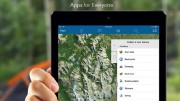Just like a well-oiled machine, ESRI’s Land Grid Mapping System seamlessly streamlines the intricate process of land division and ownership. By utilizing cutting-edge technology and geographical information systems, this innovative platform offers a comprehensive solution for mapping and managing land parcels with unparalleled accuracy and efficiency. From defining property boundaries to tracking land ownership patterns, ESRI’s system simplifies complex land management tasks, empowering users to make informed decisions with confidence. Dive into this blog post to discover how ESRI’s Land Grid Mapping System revolutionizes the way we understand and navigate land division and ownership.
The Basics of Land Division
Traditional Methods and Challenges
To accurately divide land in the past, surveyors relied on manual measurements and calculations, which were prone to human error. This process often led to disputes over property boundaries and ownership rights, making land division a complex and time-consuming task.
Advantages of Using Technology in Land Division
Advancements in technology, such as ESRI’s Land Grid Mapping System, have revolutionized the way land division is conducted. By leveraging Geographic Information Systems (GIS) and data visualization tools, surveyors can now create precise and detailed land maps with ease, reducing the margin of error significantly.
Land division processes have been simplified and expedited with the integration of technology. GIS software allows for enhanced accuracy in surveying, leading to fewer disputes and quicker resolution of property boundary issues. Additionally, digital mapping tools enable better coordination between land surveyors and stakeholders involved in the division process, fostering more efficient communication and collaboration.
ESRI’s Land Grid Mapping System Explained
Key Features of the System
One of the leading tools in land management and division, ESRI’s Land Grid Mapping System offers a range of key features that simplify the process for users.
- Interactive parcel mapping
- Advanced search capabilities
- Integration with GIS technology
- Historical land ownership data
This comprehensive system provides a user-friendly interface for accessing vital land information, making it a valuable resource for various industries.
How ESRI’s System Simplifies the Process
Land division and ownership can be complex, but with ESRI’s Land Grid Mapping System, the process is streamlined for efficiency and accuracy.
Process This innovative system automates tedious tasks, such as boundary identification and land parcel mapping, allowing users to focus on making informed decisions rather than getting bogged down in manual processes.

Land Ownership and Management with ESRI
Tracking Ownership and Transfers
One crucial aspect of ESRI’s Land Grid Mapping System is its ability to accurately track land ownership and transfers. This system provides detailed records of ownership history, facilitating the efficient management of land assets. Users can easily access information on property boundaries, owner names, and transaction dates, streamlining the process of verifying ownership and tracking any changes over time.
Enhancing Land Management Practices
Land management practices are significantly enhanced with ESRI’s advanced mapping system. By utilizing geographic information systems, land managers can visualize land assets, monitor land use patterns, and identify areas for potential conservation or development. This detailed spatial data enables informed decision-making, allowing for sustainable land management and optimized resource allocation.
Ownership data is a crucial component of effective land management, providing insights into property boundaries, rights, and responsibilities. ESRI’s Land Grid Mapping System simplifies the process of accessing and analyzing ownership information, empowering land managers to make informed decisions regarding land use and development. By integrating ownership data with spatial analysis tools, ESRI facilitates comprehensive land management practices that ensure the responsible stewardship of land resources.
Implications and Benefits
For Private Sector Stakeholders
Any private sector stakeholder involved in land development or real estate transactions can benefit from ESRI’s Land Grid Mapping System. This advanced mapping system simplifies the process of land division and ownership, making it easier and more efficient to identify property boundaries and easements. By leveraging this technology, private sector stakeholders can improve decision-making processes, streamline operations, and reduce potential conflicts related to land ownership.
For Public Sector and Governance
Stakeholders in the public sector and governance can greatly benefit from ESRI’s Land Grid Mapping System. This system provides government agencies with accurate and up-to-date land information, enabling better land management and urban planning decisions. By utilizing this mapping system, public sector stakeholders can ensure land resources are utilized effectively, monitor land use changes, and support sustainable development initiatives.
Governance: ESRI’s Land Grid Mapping System can also enhance transparency and accountability in land governance by providing stakeholders with a reliable platform to access and analyze land data. This can lead to improved land administration processes, increased public trust, and a more efficient land registration system.
To wrap up
So, ESRI’s Land Grid Mapping System simplifies the complex process of land division and ownership by providing a comprehensive and accurate tool for mapping, analyzing, and managing land parcels. This system offers a streamlined approach to visualizing boundaries, tracking ownership information, and ensuring efficient land management. With its user-friendly interface and advanced capabilities, ESRI’s system enhances decision-making and simplifies land-related tasks for a wide range of industries, from real estate to agriculture to urban planning. By leveraging the power of GIS technology, ESRI has revolutionized how we understand and interact with land division and ownership, making processes more efficient, transparent, and accessible.






Be the first to comment on "How Does ESRI’s Land Grid Mapping System Simplify Land Division And Ownership?"